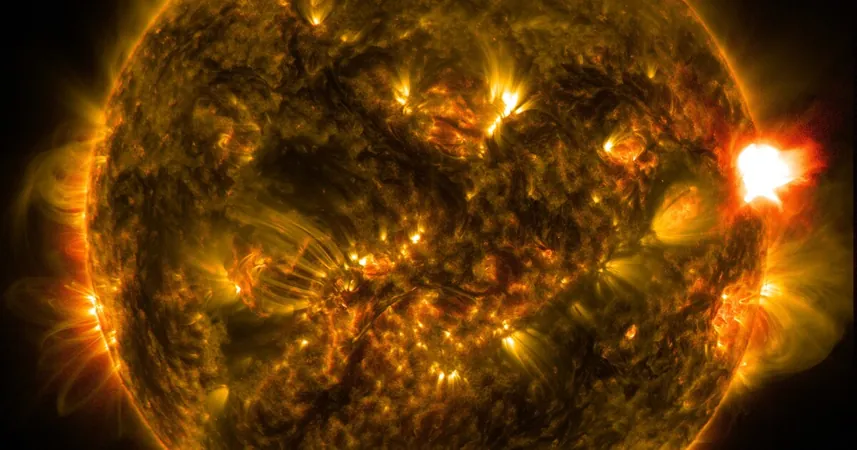
Unveiling the Fiery Truth: Solar Flares are Hotter Than We Ever Imagined!
2025-09-05
Author: William
Solar flares, the breathtaking yet perilous bursts from our sun, could be a staggering 180 million degrees Fahrenheit — a temperature six times hotter than scientists previously thought!
According to groundbreaking research published in the Astrophysical Journal Letters, physicist Alexander Russell from the University of St. Andrews in Scotland described this shocking revelation as "a crazy number," highlighting the team's astonishment. This marks a significant leap in our understanding of these solar phenomena.
So, how do these massive heat eruptions occur? Solar flares happen when magnetic energy from the sun gets unexpectedly released, sending out energetic particles — ions and electrons — that get superheated and propel outwards at incredible speeds.
Historically, scientists measured the heat of solar flares by focusing on the temperature of electrons, assuming the ions would follow suit. However, Russell and his team's recent computer simulations and near-Earth observations suggest a groundbreaking discovery: ions heat up significantly more than previously believed.
Through their calculations, they determined that solar flares might exceed 100 million degrees Fahrenheit — and potentially reach even higher. James Drake, a physicist at the University of Maryland, who has long been examining the heating effects of solar magnetic processes, emphasized that the distinction between electron and ion temperatures has been long overlooked.
His excitement about this research is palpable as it may revolutionize our understanding of solar flares, potentially leading to improved protections for vital technology like satellites and ensuring astronaut safety against these stunning yet dangerous solar displays.
As for the future, Russell and his team are hard at work on developing new models that account for the enhanced heating of ions compared to electrons, promising even more revelations about these spectacular solar eruptions.









 Brasil (PT)
Brasil (PT)
 Canada (EN)
Canada (EN)
 Chile (ES)
Chile (ES)
 Česko (CS)
Česko (CS)
 대한민국 (KO)
대한민국 (KO)
 España (ES)
España (ES)
 France (FR)
France (FR)
 Hong Kong (EN)
Hong Kong (EN)
 Italia (IT)
Italia (IT)
 日本 (JA)
日本 (JA)
 Magyarország (HU)
Magyarország (HU)
 Norge (NO)
Norge (NO)
 Polska (PL)
Polska (PL)
 Schweiz (DE)
Schweiz (DE)
 Singapore (EN)
Singapore (EN)
 Sverige (SV)
Sverige (SV)
 Suomi (FI)
Suomi (FI)
 Türkiye (TR)
Türkiye (TR)
 الإمارات العربية المتحدة (AR)
الإمارات العربية المتحدة (AR)